When All the Boats Rise
We look at what happens when school districts quit competing—and instead, work together toward a common goal.


When All the Boats Rise
How school districts can put aside competition and start working together
It seems we can’t talk about public education anymore without using a lexicon of competition. School choice policies, by their very nature, suggest an either/or mindset; either families choose this school or they choose that school. Thinking of schools as pitted against one another—as players in a competition—suggests that in order for one district to thrive, another must fail. But that simply is not true.
Instead of talking about one local district cannibalizing the enrollment numbers of another, what would it look like to dream up a regional enrollment campaign? Instead of pushing your STEAM program to surpass that of the district across the county, what would it look like to collaborate and improve learning opportunities for all students? There’s nothing wrong with a competitive spirit, but what happens when districts quit competing with each other and, instead, join forces to compete with the challenges and limitations imposed upon them? Multiple districts can, in fact, thrive all at once—if they work together.
Here, we’ll walk through three examples of what districts have accomplished through effective collaboration. Our hope is that you’ll find something you want to try, then share it with the districts and leaders around you. After all, you know what they say about rising tides.
Collaboration can lead to program innovation.
According to Dr. Jeff Hadley, superintendent of Avonworth School District in Pennsylvania, districts in Allegheny County—including his—have a uniquely collaborative approach to education. Hadley describes the relationships between the districts in his area as a “regional ecosystem,” one in which school leaders both support and challenge one another. “You always look at what your neighbor is doing and think, Oh, that’s really cool. I wish we were doing something like that,” Hadley says. “It creates an awareness that pushes you to think of new and better ways of doing what you’re already doing.”
But before we delve into what’s come from the relationships between districts in Allegheny County, let’s talk about where those relationships started: the Grable Foundation, a Pennsylvania-based nonprofit focused on bringing innovative education initiatives to regional districts. The foundation accomplishes this in part by encouraging collaboration between educational institutions, including schools, libraries and after-school programs. So that’s where Hadley’s “ecosystem” started, but not where it stopped.
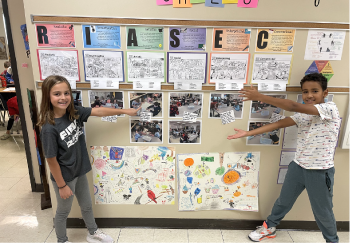
With collaboration having proven successful at the regional level, districts in Allegheny County moved to collaborate at the national level. How? By applying to be members of the Digital Promise League of Innovative Schools, a national network of districts focused on implementing—and sharing—innovative practices. A key benefit of being selected as a member is the opportunity to visit and learn from other schools across the league.
After becoming league members, Hadley and other school leaders from Allegheny County travelled to another league district near San Diego. While visiting, they learned about Cajon Valley Union School District’s World of Work program, which supports students in identifying their unique strengths and various career opportunities that might speak to them. “Essentially, it was about integrating career exploration into the learning that’s already happening in the classroom,” Hadley explains. “And when we came back to Pittsburgh, a group of us got to talking about how we could make it work in our specific context.”
Thanks to the League of Innovative Schools, Hadley and his colleagues came home with fresh ideas from all the way across the country—but it was their regional connections through the Grable Foundation that allowed them to take action. With a grant from the foundation, Hadley and his colleagues implemented what is now known as Pittsburgh World of Work. The grant money allowed them to hire both an administrative fellow and a teacher fellow who are responsible for tailoring grade-level curriculum to the World of Work focus across four different districts. Now, in the program’s third year, K-8 students in all four districts can explore six careers per year through learning that has been seamlessly integrated into preexisting curriculum.
“As we’re building this program, the premise is to make it available to the whole region,” Hadley tells us. “Our two fellows are providing professional development to teachers and administrators to help them start programming in their own districts. There’s no competition, no worry about cost being an issue. It’s free. Our goal was to even the playing field.” And while your district may not have the Grable Foundation as a resource, could you apply to be a league member? What other practitioner networks might you plug into? Connecting with other educators who are innovating in the field is a great way to expand your horizons and ensure your district is offering the best possible opportunities for students.
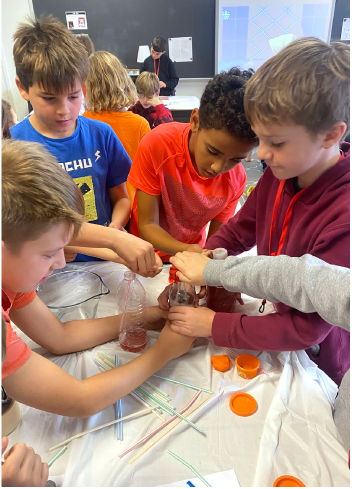
Collaboration can improve efficiency.
Schools are struggling not only to fill teacher vacancies, but also to find bus drivers, cafeteria workers, paraprofessionals—you name it. And because most regions have a finite pool of candidates, where one role is filled, another is vacated. But instead of fighting over a limited number of candidates, the key to moving the needle on staffing shortages may be deepening the pool of prospective hires.
Professional pipelines and certification pathways are great solutions, but they’re only half the battle. First, schools must convince potential candidates, many of whom have no prior connection to the district, that education is a viable career option. But what if, instead of every district managing their own recruitment campaigns, they teamed up to orchestrate a regionwide approach? That’s exactly what Chester County Intermediate Unit (CCIU) in Pennsylvania did for the districts they support. According to Marketing and Community Engagement Manager Jen Chicosky, CCIU’s countywide recruitment campaign aimed to position their districts as potential employers in the minds of community members who otherwise wouldn’t have given district vacancies a second thought.
The campaign began with CCIU hosting workshops for HR and comms directors from each of the 12 districts they serve. “It was really a collaborative effort to identify our target audiences and key messages, then come up with an entire campaign strategy,” Chicosky tells us. While the campaign did include paid ads, Chicosky didn’t want districts to have to foot the bill. Instead, participating districts offered sponsorship packages to their substitute agencies, cleaning agencies and any other staffing agencies that might benefit from CCIU’s awareness campaign. With that funding, CCIU was able to secure billboards, paid digital ads and even airtime on the radio—which they used to promote their job fair.
And if all these advertising efforts were the spokes on CCIU’s campaign wheel, then their school jobs website was the hub. The website is full of photographs taken and submitted by communications professionals in CCIU’s 12 districts. You can find information about upcoming career-focused events and CCIU’s staffing partners, many of whom are sponsors of the campaign. Perhaps the star feature of the website, though, is the Chester County interactive map. When you click on any of the 12 districts in Chester County, a short blurb from the district will appear with a link to their specific job board.
When we asked Chicosky about the benefits of taking a regionwide approach to recruitment, she said: “It’s just so much more efficient.” HR and comms directors often work on teams of one, meaning they likely don’t have the capacity for a robust awareness campaign. “Leveraging all districts is more efficient for all of us, but I also think that it creates a stronger impact on the community,” she says.
Part of how the countywide recruitment campaign projected a unified front was through cohesive brand and messaging. “When people see the same kind of visuals and hear the same kind of messages over and over again, that can really get people to think about whether education is a good place for them,” Chicosky tells us. CCIU also provided branded templates to participating districts so they could easily highlight their own openings online while remaining consistent with the broader campaign’s brand.
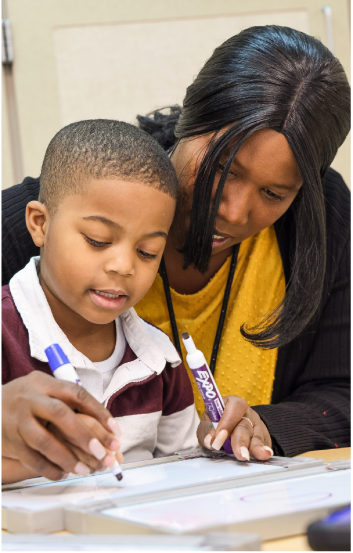
“We offered them some scripted, plug-and-play content options because we wanted an integration of paid and organic content,” Chicosky explains. “We wanted to make it as easy as possible for them to share their school pride because districts are obviously doing a phenomenal job on their own. The IU is more of a supportive partner than anything else.”
Whether you’re part of an IU, BOCES, ESA or any other acronym—what might it look like to leverage that resource? “We can come up beside you and say, ‘How can we support you? How can we work together?’ Because we have resources, too. I think that’s one of the things the IU does really well,” Chicosky says. “We’re able to leverage resources on a county or even state level. Where it might be really difficult for a district to leverage a campaign like this on their own, by bringing us all together, we can make it more of a collaborative thought partnership.”
Collaboration can increase impact and shift perceptions.
SchoolCEO has long championed the importance of storytelling at the district level. Stories change minds and hearts—but what can you do when a pernicious story takes root? Some negative narratives—such as the current national narrative about public education—are too much for one district to tackle alone. That’s exactly why the Sunshine State School Public Relations Association (SUNSPRA) and the Florida School Board Association (FSBA) partnered to launch the Florida Public Schools “Endless Opportunities” campaign. Their tagline: Think you know Florida Public Schools? Think again.
“People don’t know what school looks like anymore,” says SUNSPRA President Katherine Crnkovich, APR, CPRC. “It’s been a long time since the people who are in conversations about public education have been in schools themselves. Schools today are different, and we want to empower districts to tell their stories and hopefully change public perception around the narrative that public schools are failing—because they’re not.”
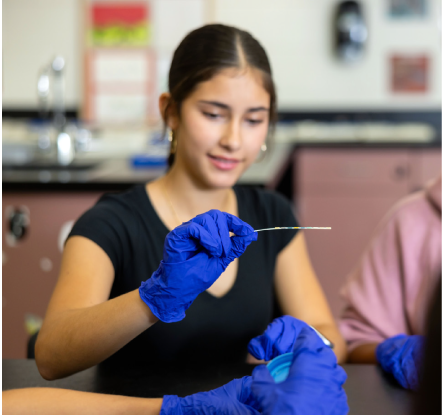
FSBA leaders had the idea to launch a statewide campaign to help districts tell positive stories in the hope of shifting the broader public narrative about education. “We wanted to highlight all the amazing things happening in schools every day,” says Amie Williamson, FSBA’s communications and conference planning manager. “Our goal was to create videos to kickstart the campaign, then create a toolkit of resources for all districts to use so that they could tell their own stories within the campaign.”
FSBA wanted the campaign’s impact to extend across the entire state of Florida—a considerable undertaking. “And in thinking about tackling a massive project like that,” Williamson continues, “it just made sense to partner directly with the people who are already communicating district success stories in their own communities.” In other words, not only did the campaign promote collaboration between districts, it was itself founded on collaboration between two organizations: SUNSPRA and FSBA.
To get started, FSBA and SUNSPRA facilitated task forces of district representatives from across the state to get input on the campaign’s overall direction and key messages. With that feedback in hand, FSBA then connected with a professional production company, Copeland Productions, to film videos that FSBA and SUNSPRA could use online. Copeland also created digital assets and user-friendly instructions so that Florida districts could easily create their own content—even with limited capacity and no prior experience.
The end result? A comprehensive digital media kit provided for free to school leaders across all of Florida. The kit contains everything from the campaign’s branding—designed by Collier County Public Schools’ Coordinator of Communications Maribel De Armas—to premade videos and posts for social media. “The assets were designed to integrate seamlessly with both sophisticated video editing software, such as Adobe Premiere Pro and Final Cut Pro, as well as user-friendly platforms like Canva,” says Williamson. “This ensures a consistent and professional look across all platforms, regardless of the user’s skill level.”
“This campaign allowed us to create a unified vision,” Crnkovich says. “It doesn’t matter what public school your child is enrolled in. They have endless opportunities. Public schools lead the way in school choice. Nobody can match what a public school can do for a child.” The most frustrating thing for Crnkovich, though, is how difficult it is for positive stories to gain traction. “What sells nowadays is the negative,” she tells us. “That’s what people gravitate toward.” And that’s why the unified brand identity of the “Endless Opportunities” campaign is so critical.
“Not only are you obviously going to improve your analytics and boost SEO if everybody’s using the same taglines and verbiage,” Crnkovich tells us, “but you’re going to garner more views. You’re going to interact with more audiences. By framing everything within the broader campaign, we can drive our reach. We want our people to personalize the content they share within the scope of the campaign—but if we really want to have an impact on public perception, we have to be able to look at the big picture. It’s all about telling a story within a story.”
Both Crnkovich and Williamson were keen to point out that an undertaking like this—one as massive as changing perceptions of public education—would absolutely not be possible for any one team alone. Many Florida school districts have small communications teams, if they have one at all. And even SUNSPRA or FSBA would have struggled to pull a major campaign like this off by themselves. “Strong partnerships are essential. Without them, you’re missing out,” Williamson says. “Diversity of thought, diversity of ideas—that’s how you increase opportunities for students.”
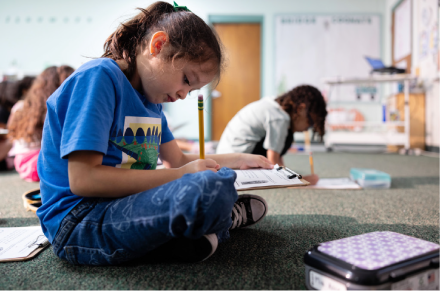
Rising Tides
At its core, collaboration means leveraging your unique strengths in order to best utilize a finite amount of resources. It’s not about losing local pride; it’s about pulling together to make a bigger impact. Whether your goal is to implement innovative new programs, improve recruitment or change the narrative about public education as a whole, you can’t do it alone.
But like with most strategies that have the potential for deep impact, there’s no one-size-fits-all technique for collaboration. And while we recognize that collaborating with other districts may feel more possible in some areas than in others, we don’t think collaboration is ever completely out of reach. Whether you apply to be a member of the League of Innovative Schools, connect with your ESA (or whatever cost-sharing program is available in your region) or even just send an email to a district in the county over, there’s almost always a partnership or network to plug into.
“If there’s one unifying thing in education right now, it’s that we have to do what’s right for kids,” Crnkovich says. “No matter what people may think or believe, public education prepares students for the future. So be willing to step out of the box, even if that means collaborating with people you wouldn’t have thought to collaborate with. There is a richness in the outcome when you surround yourself with multiple perspectives.”
And Chicosky would agree. “What do you have to lose?” she asks. “All that happens when we work together is we lift each other up. It’s like what they say about when all the boats rise.”

